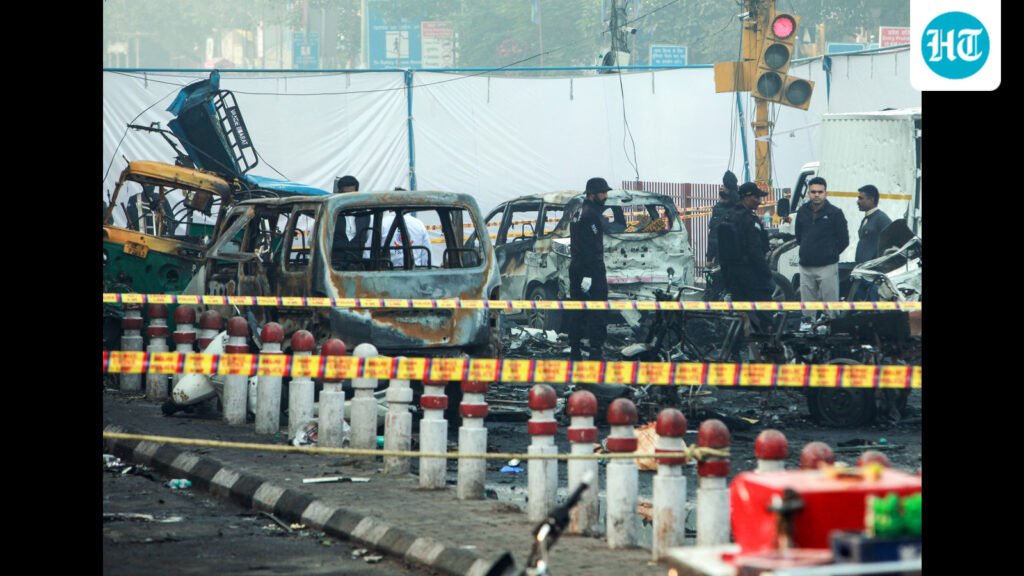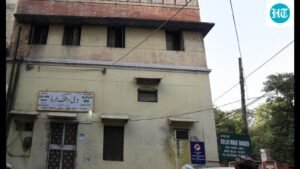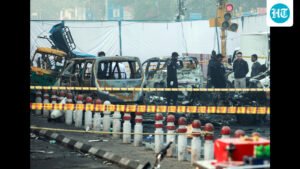
The car blast near the Red Fort on November 10 — later identified as a terror incident by the government — has shocked the nation. Often, such incidents spark immediate speculation and deepen divides, with all sorts of narratives not based on facts fanned by various parties. Against such a backdrop, the media must be commended for providing exhaustive yet objective and fact-based coverage of the incident this time. This is the ideal way we can build public opinion against terror and induce our society to lend its weight to our security agencies fighting the uneven war that is terrorism.

The question that haunts many after the car blast, the extensive details about the planning, and a video attributed to the suicide bomber, Umar un-Nabi, that emerged afterwards — especially regarding the involvement of a network of doctors — is why and how a group of white-collar professionals, all of whom were well-established in society, got so radicalized that they ended up giving effect to a deadly terror attack. The background of the suspects identified/held so far in the case alone would strongly suggest that when it comes to religious fanaticism and hatred, nothing matters. How the conspirators executed their plan — or at least a part of it — unnoticed by the many security agencies spread out across the nation is also intriguing.
Was there a security lapse, as some have asked? This question is tendentious because it ignores the enormous challenges policing faces in such a large country, as well as the near-impossibility of tracking arrivals and departures of persons in a national Capital as diverse as Delhi, to pre-empt such incidents.
Criticizing the law enforcement agencies that have done an admirable job in unraveling the conspiracy in such a quick time will surely be unfair. The various arms of the security apparatus must be commended instead for uncovering links between the different actors involved in the incident and the terror module responsible. Sophisticated, modern tools of investigation have helped the agencies greatly in connecting the dots.
There was, in the past, a reluctance to integrate technology in police investigations — specialized agencies did use this, though — mostly because of apprehensions about being able to correctly use it and the scale of training that would be required. That is now gone, and in the course of the next few decades, technology is likely to have a leading spot in police investigations.
Coming back to the incident, it shows that hardened terrorists, especially those who draw inspiration from Pakistan, will continue to be a torment for India. It is very difficult to foresee a time when terrorist recruitment will stop and the unleashing of mindless violence becomes unattractive.
Harvard political scientist and a key official in the Jimmy Carter administration, Samuel Huntington, had warned in his essay, “The Clash of Civilizations”, about religious fundamentalism relentlessly fueling conflict. This means the rigor of law enforcement and restrictions cannot be compromised, notwithstanding the annoyance and inconvenience caused to law-abiding residents of a country. In the context of the Pahalgam and Red Fort attacks, the need is to step up rather than dilute field-level checks on the movement of people and vehicles.
In the aftermath of the September 11 terror attack in the US, the world saw intensified monitoring and checking, including profiling for such checks — in malls, airports, and all places imaginable in the cityscape. This approach saw a huge public outcry, not just about the irksome regulation of movement in public and regulated spaces but also about racial and religious discrimination. This has now given way to a willing submission to strict security guidelines in place across the world. Scaling down such protocol is unwarranted.
I was baptized in the subject at Sriperumpudur, Tamil Nadu, on the night of May 21, 1991, at the venue for a public meeting held by former prime minister Rajiv Gandhi. He was assassinated a few feet away from where I was posted as part of the security detail. That incident was definitely a failure of the police and the intelligence machinery. I realized that evening it was not enough to have large manpower to ward off inimical elements. What is sine qua non is accurate intelligence. Substantial manpower deployment alone will not deter attackers. Each one of them will have to be identified and apprehended before they can execute the devastation they plan.
In the Red Fort case, we were dealing with a moving object, a scenario that does not yield to traditional security arrangements — unless the specific identity of the perpetrator is known in advance. That complicates security strategies, but that must not be allowed to become a hindrance.
Another incident deeply imprinted in my mind because of how close and personal its impact felt — and which underscores the imperative for heightened security — was the World Trade Center attacks in New York on September 11, 2001. I was in Harvard (Boston) as a visiting fellow. Al Qaeda’s success in bringing down the Twin Towers through a novel method of attack numbed many of us huddled around TV sets, sharing in America’s collective shock, horror, and grief.
From that day to now, nations have been unable to discount the ingenuity of those whose principal aim is to induce terror. Huntington’s thesis about a heavily split globe remains valid and needs the security responses merited.
RK Raghavan is a former CBI director and professor of criminal justice at the Jindal Global University. The views expressed are personal





